
Theater
When Peter Stohrer moved to Cologne in 1984, not only a lively art scene awaited him, but also a flourishing independent theater scene. He had already made a painting for the play “Harte Drinks in der in der Südstadt” (directed by Angelika Finger) at the Bauturm Theater, as well as for Burkhard Schmiester’s production of “The Tale of the Maid Zerline” at the
Severinstorburg, from which the name Severins-Burg Theater was later derived. Unfortunately, hardly any photographic images of the stage sets for which he was responsible exist, as they were destroyed during water damage. However, some design sketches can be found, especially of the scene lighting. One focus of his work as a stage designer at that time was lighting design.
Stage sets

Author: Samuel Beckett
Program: Nicht ich/Rockaby/Tritte/Atem
Performance: 1987
Direction: Burkhard Schmiester
Stage: Peter Stohrer
Severins-Burg-Theater
Beckett Triologie-Beckett Triology
This production was an experiment: the theatre audience was picked up by bus in front of the Severinstorburg in Cologne’s Südstadt and driven to the other side of the Rhine, to Cologne-Poll. During the bus ride, the audience listened to Beckett’s play “Not I” over loudspeakers, a monologue that was continued over a television when the audience arrived in the kitchen of the Stohrer/Savić couple. The audience only saw the mouth that continued the narration.
Meanwhile, the audience was led one by one to the basement, to Peter Stohrer’s swimming pool studio. They sat on the edge of the pool and looked into a sparsely lit room whose light sources were reflected in the tiles. Stohrer had built a television installation so that the white image noise of the televisions was only visible through a slit, in front of which the actress for “Tritte” was acting. On the gallery, lit only by a row of tea lights, another actress walked up and down, only her feet could be seen and the echoing sound of her heels could be heard. “Rockaby” was playing out below the gallery: The actress, lit only by a torch fixed above, sat in a rocking chair, rocking back and forth into the light and back into the dark during her dying monologue.
The simplicity of the means corresponded to these exceedingly minimalist late one-act plays by the author and congenially captured the repetitive noise in the characters’ heads.
Severins-Burg-Theater
Preparadise sorry now
“The skyline of a large city as the backdrop to the stage, radiating icy coldness, shaded in blue. Like splinters from black dreams, now scenes, the “contres” in aggressive colours. In red, yellow and black. (…) The shimmering metal blinds, behind which the “contres” roll backwards, are effective. “An oppressive cold-blooded inventory from the underworld of human obsessions.” Excerpt from Kölner Stadtanzeiger , 15.03.1988
“For the second time, the Severinsburgtheater uses the sacred aura of its venue for a black mystery play (…) The cool, bleached-out style of Faßbinder’s early films, the distancing gesture of a social-psychological case study are appropriate here. Director Dana Savić succeeds very well in this stylisation. Using the limitations of the round arches, the scenes of three people are presented first. The groupings are each highlighted by garishly coloured costumes. Two red shirts against one yellow shirt, or two yellow shirts against one red shirt.” Broadcast recording Mosaik, WDR, Gerhard Preußer
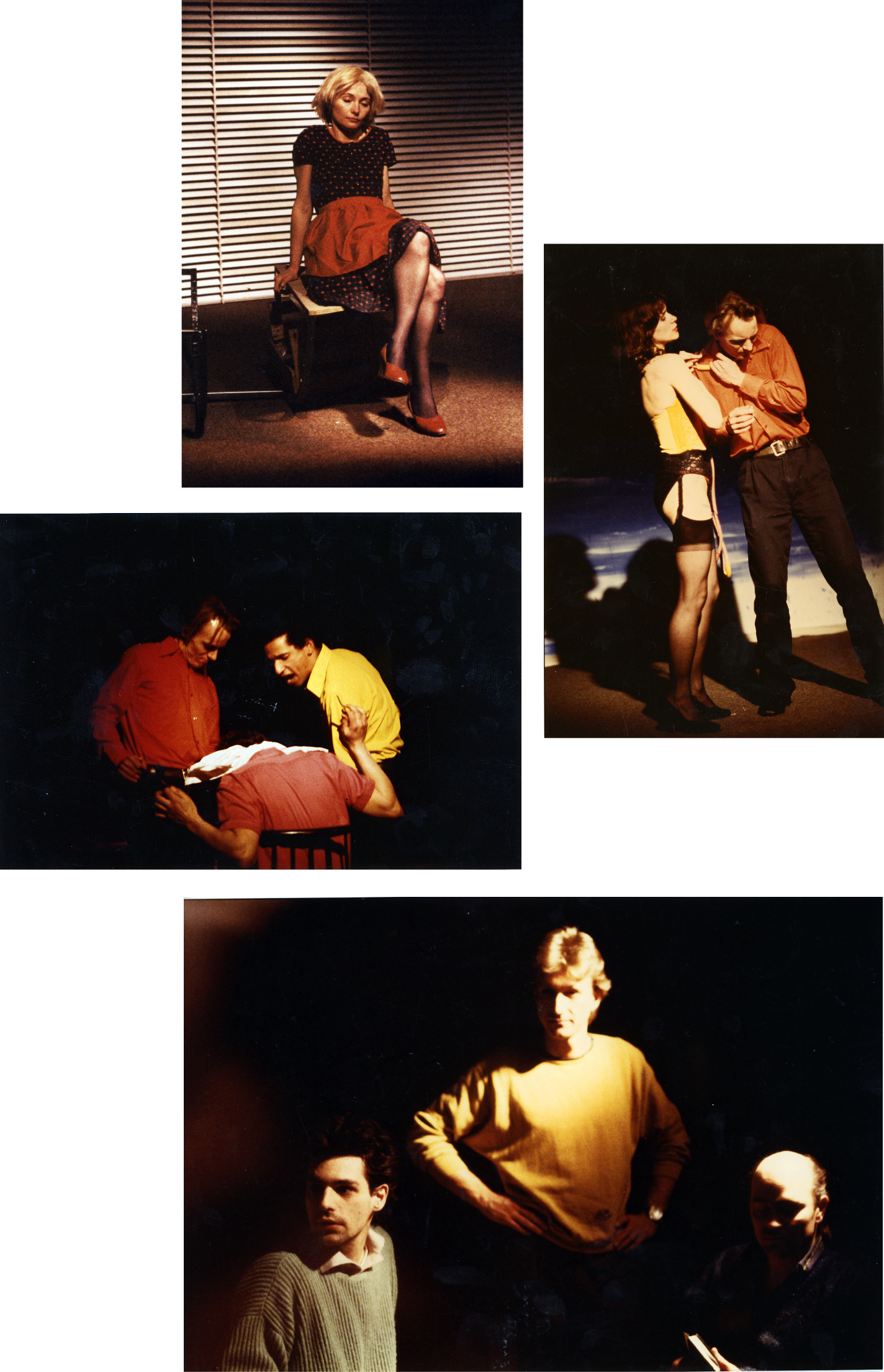
Author: Rainer Werner Fassbinder
Premiere: 12.03.1988
Direction: Dana Savić
Stage: Peter Stohrer/Andreas Müller

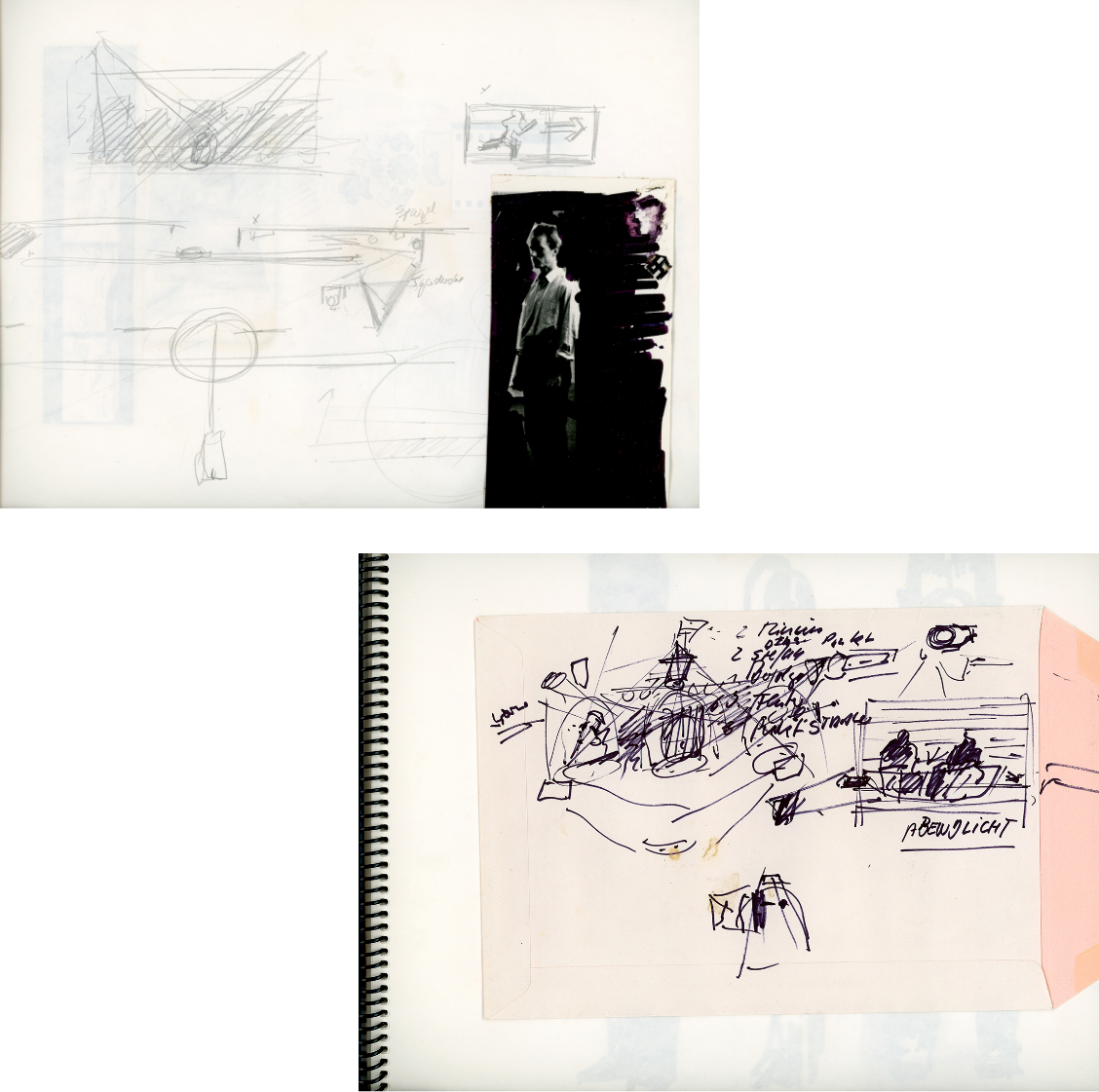
Kunsthaus Rhenania
Lost Time
In 1989, the Kunsthaus Rhenania at Rheinauhafen still radiated the raw charm of the granaries. A few artists had set up studios, a few bands had their rehearsal rooms, a part of the autonomous scene lodged between the floors. The group Theatersyndikat saw exactly this as the ideal setting for the big-city relationship drama “Lost Time”. But first they had to saw, hammer and axe the space so that it would be playable at all. With Andreas Müller, Peter Stohrer created an ironic post-modern loft space into which the audience was lured with a fantastic harbour view before sinking into the depths of a war of the sexes.
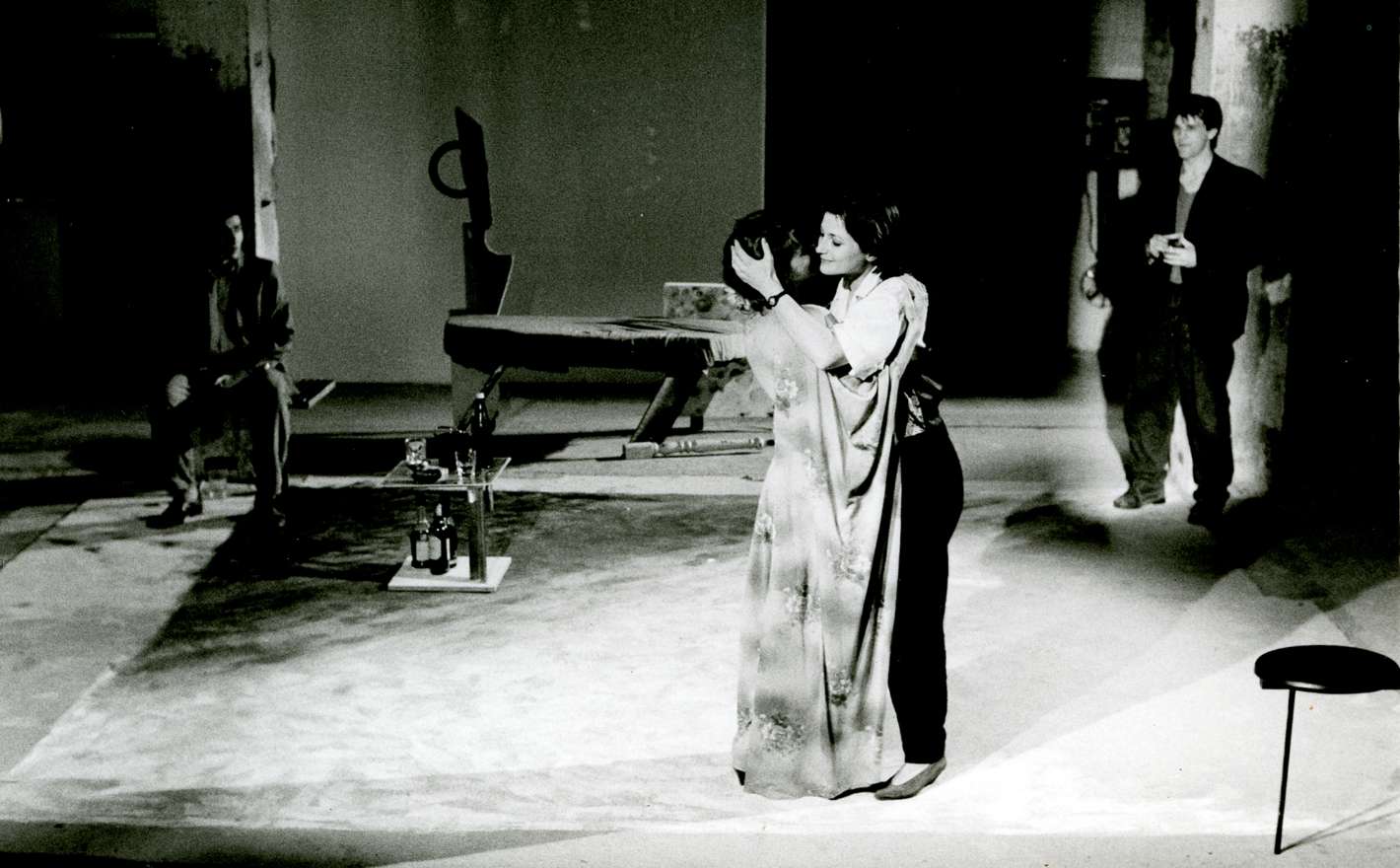
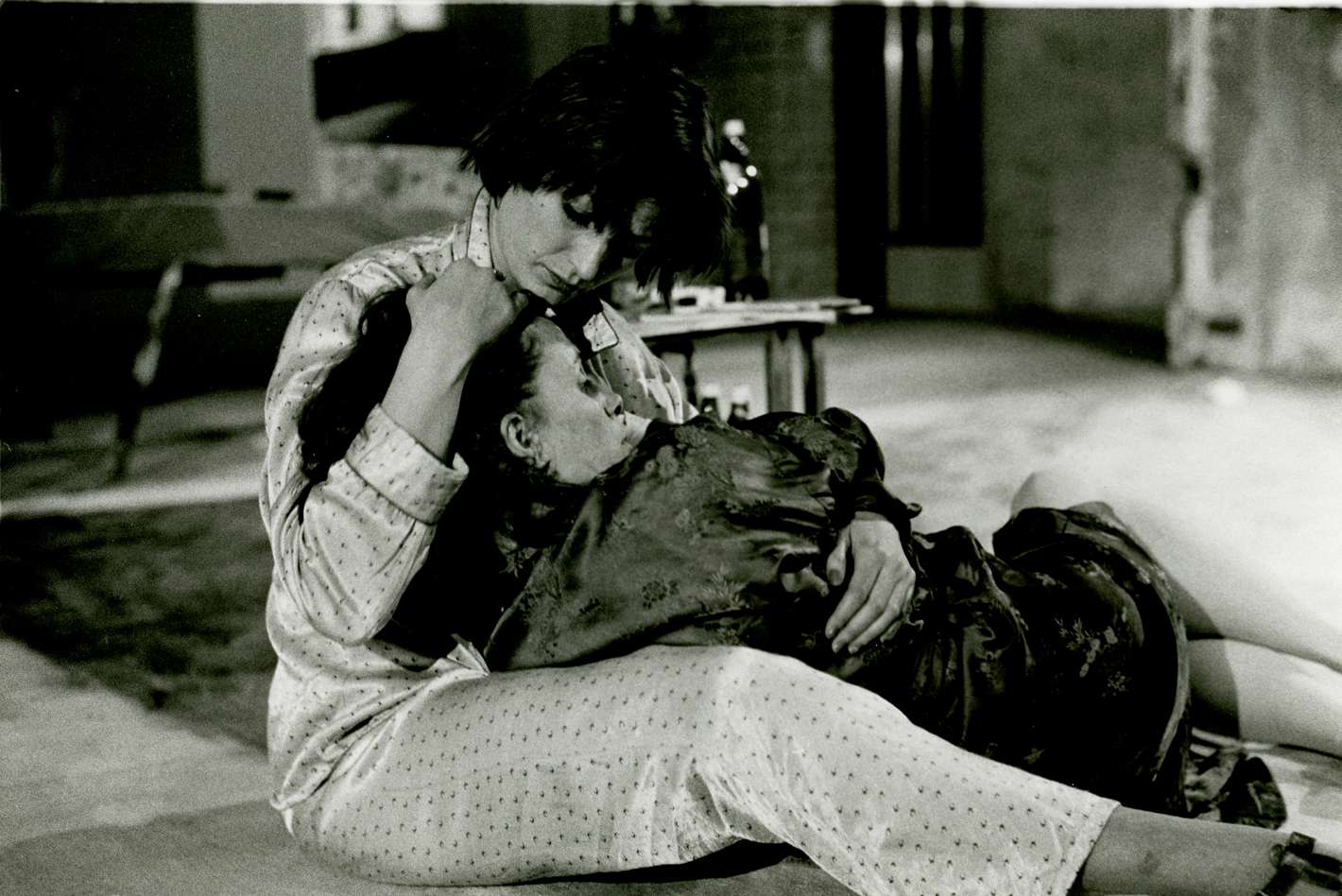
Author: John Hopkins
Premiere: 19.05.1989
Direction: Dana Savić
Stage: Peter Stohrer/Andreas Müller
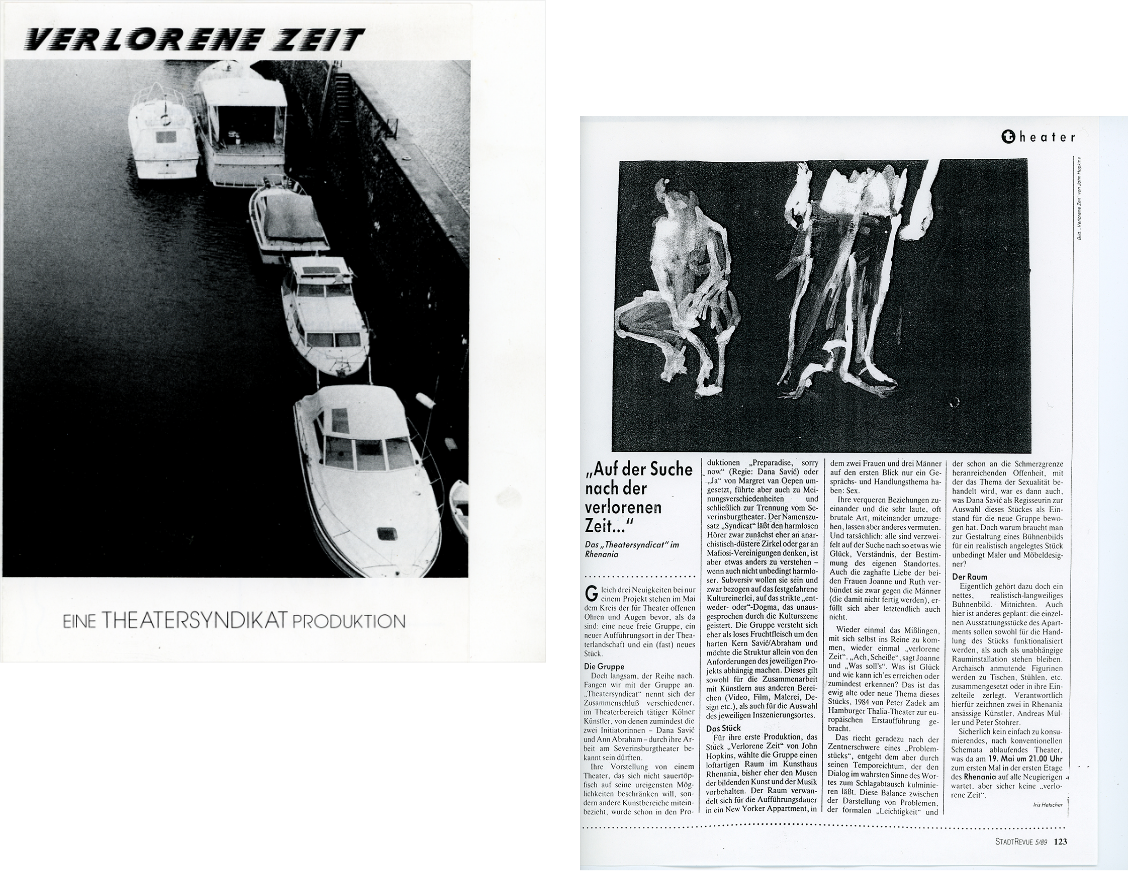
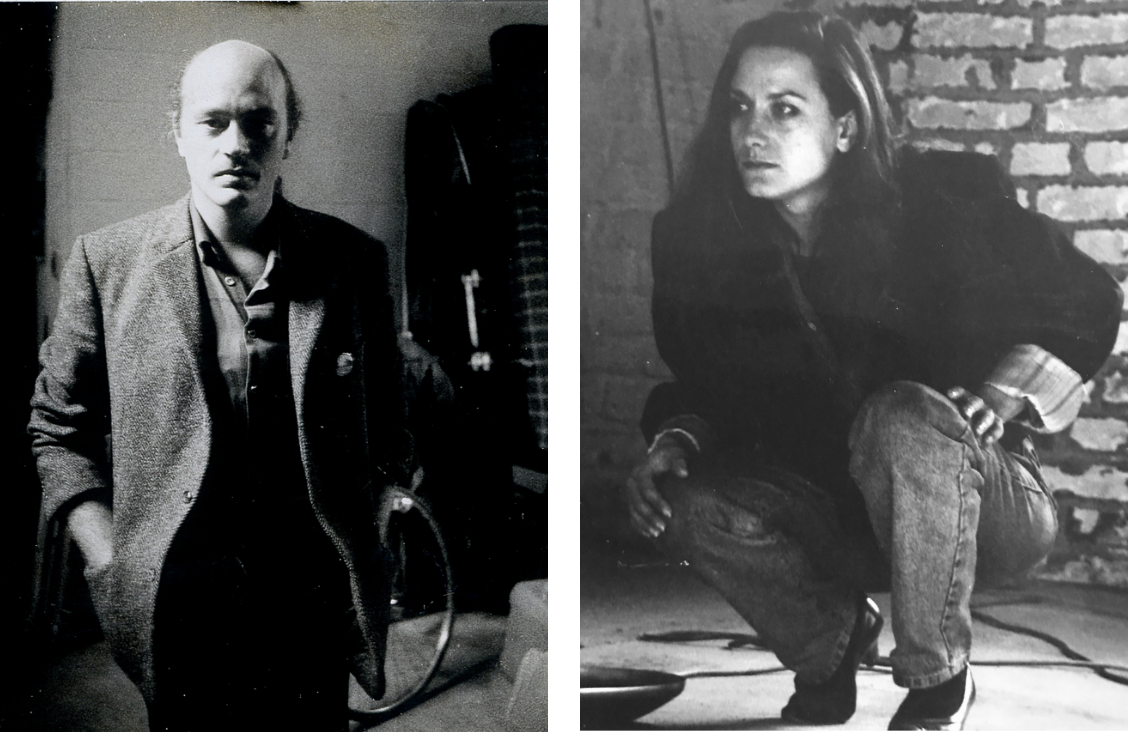
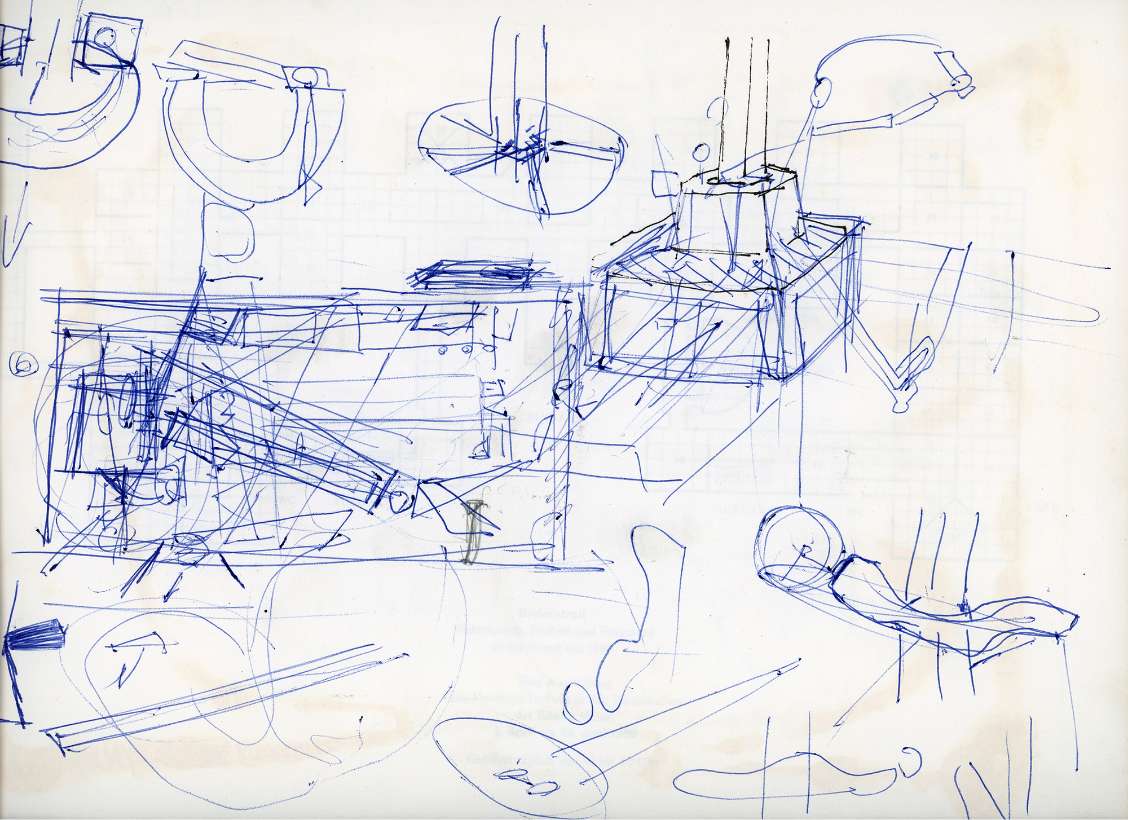
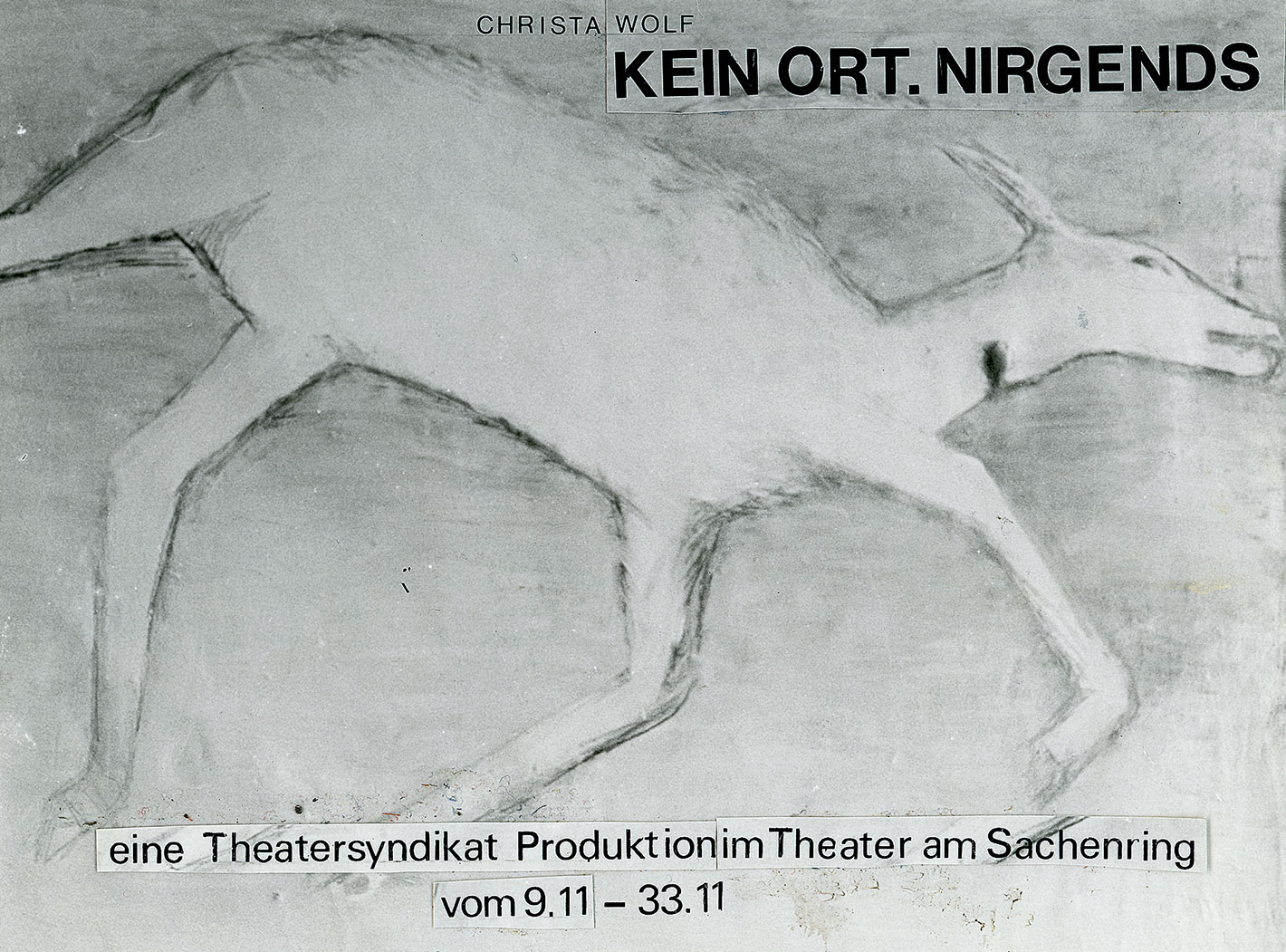

Theater am Sachsenring
Kein Ort. Nirgends-No place.Nowhere.
The set designer took his cue from the visual language of Romanticism. For in “Kein Ort.Nirgends” by Christa Wolf, Karoline von Günderrode and Heinrich von Kleist meet in a salon for a tea party. Two poetic outsiders who failed society and committed suicide independently of each other. A footbridge with sand and a mirrored paravent criss-crossed by grids and paper are the only stage elements in the Theater am Sachsenring. The intermittent reflections supported the disjointedness of the characters, the possibility of walking behind the screen created a shadow play typical of the time, and the grids emphasised being trapped in social conventions. In it, Christa Wolf covertly reflected the situation of the artists and the social corset of the GDR. Guest performance invitations from the Goethe Institutes in Amsterdam and Brussels followed.
Author: Christa Wolf
Premiere: 09.12.1989
Direction: Dana Savić
Stage: Peter Stohrer
Studiobühne Köln
„Duett“, Uraufführung-“Duet”, World Premiere
Unfortunately, hardly any photographic images exist of the stage designs for which he was responsible, as they were destroyed in a water damage incident. “Duett” (1992) at the Studiobühne had an extremely complex multimedia stage set consisting of tickers and slide installations. Since the play had a show character, a steel staircase was specially built for it (Rolf-Maria-Rexhausen), candidate booths, props, such as a pig to be assembled, overturning federal eagles and many other moving elements designed and built by Peter Stohrer were also part of it.
It is necessary to mention this because the independent theatre scene had neither the personnel, nor the technical, and certainly not the financial means, to mount large, complex productions. Productions of this kind could only be realised through a high degree of passion, discipline and self-exploitation.
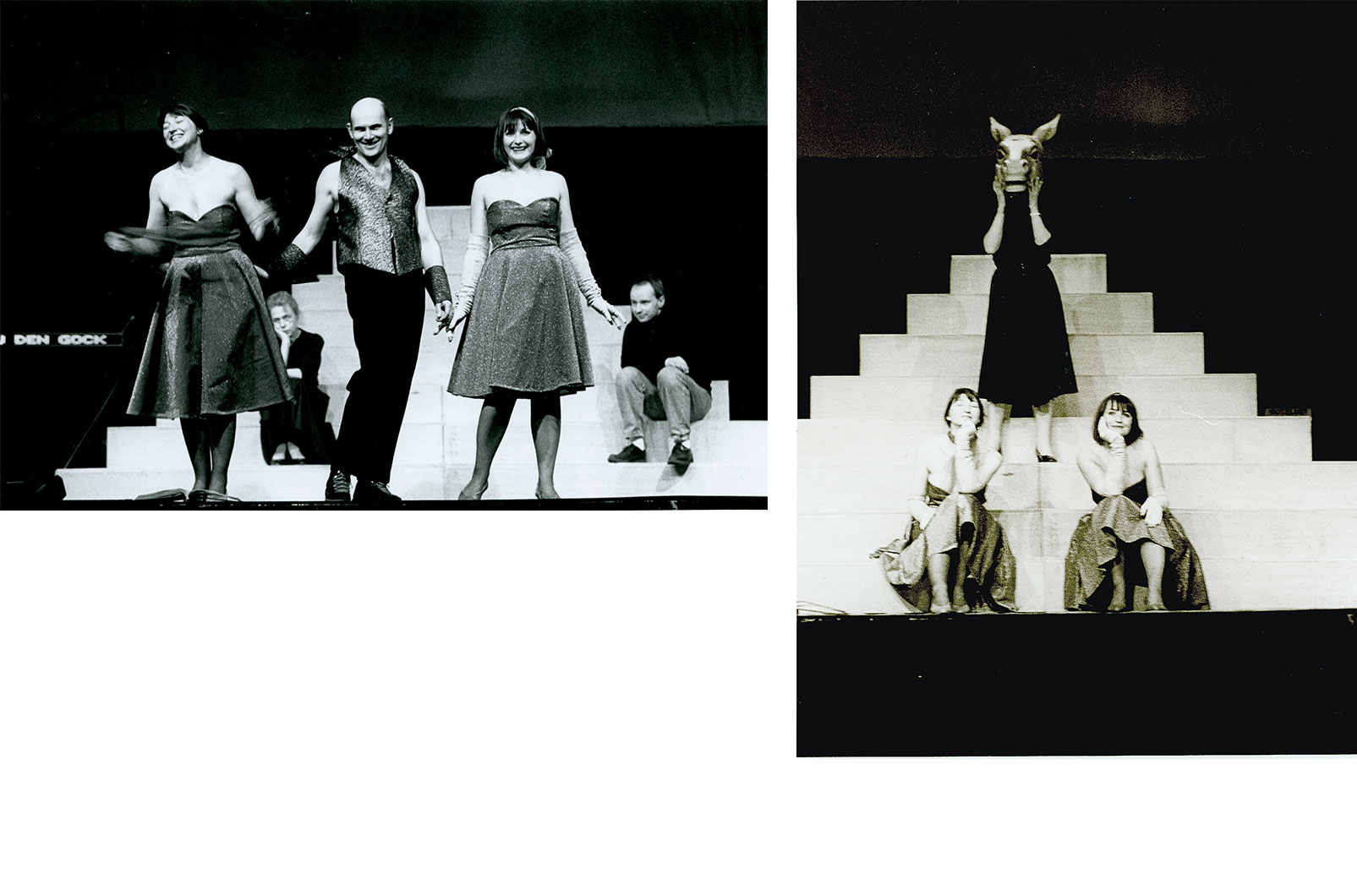

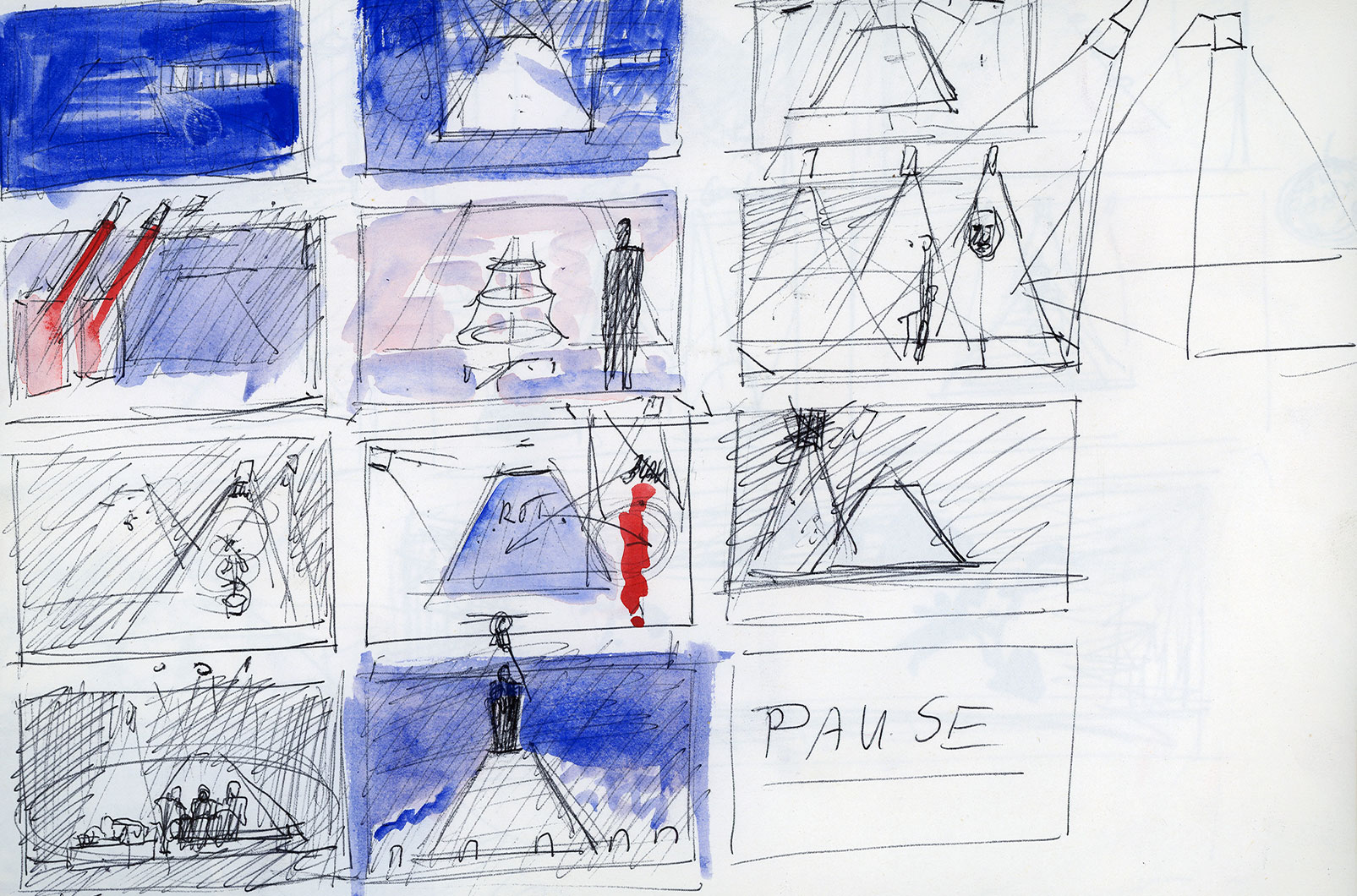
Author: Dana Savić
Premiere: 14.02.1992
Direction: Dana Savić
Stage: Peter Stohrer

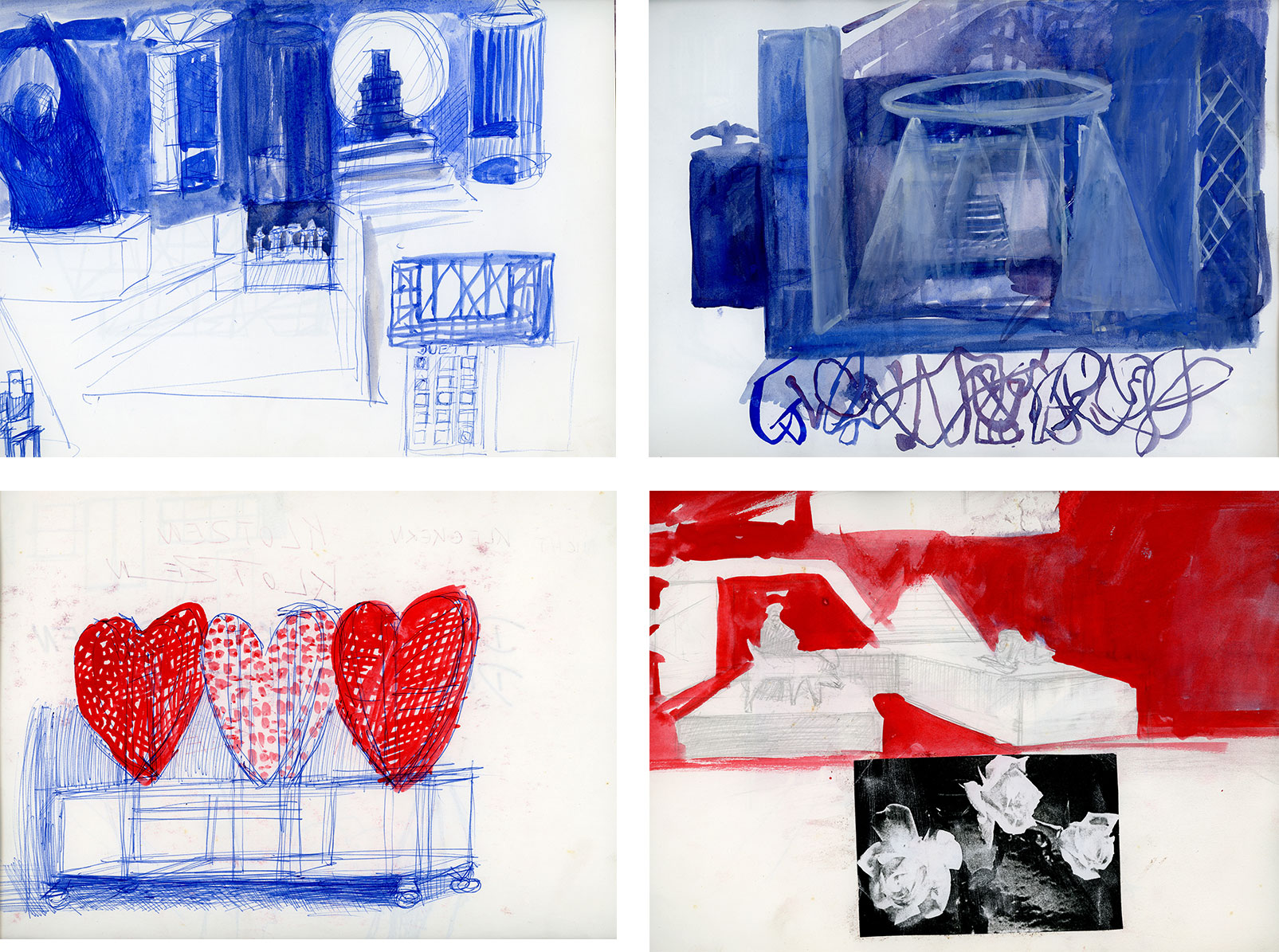
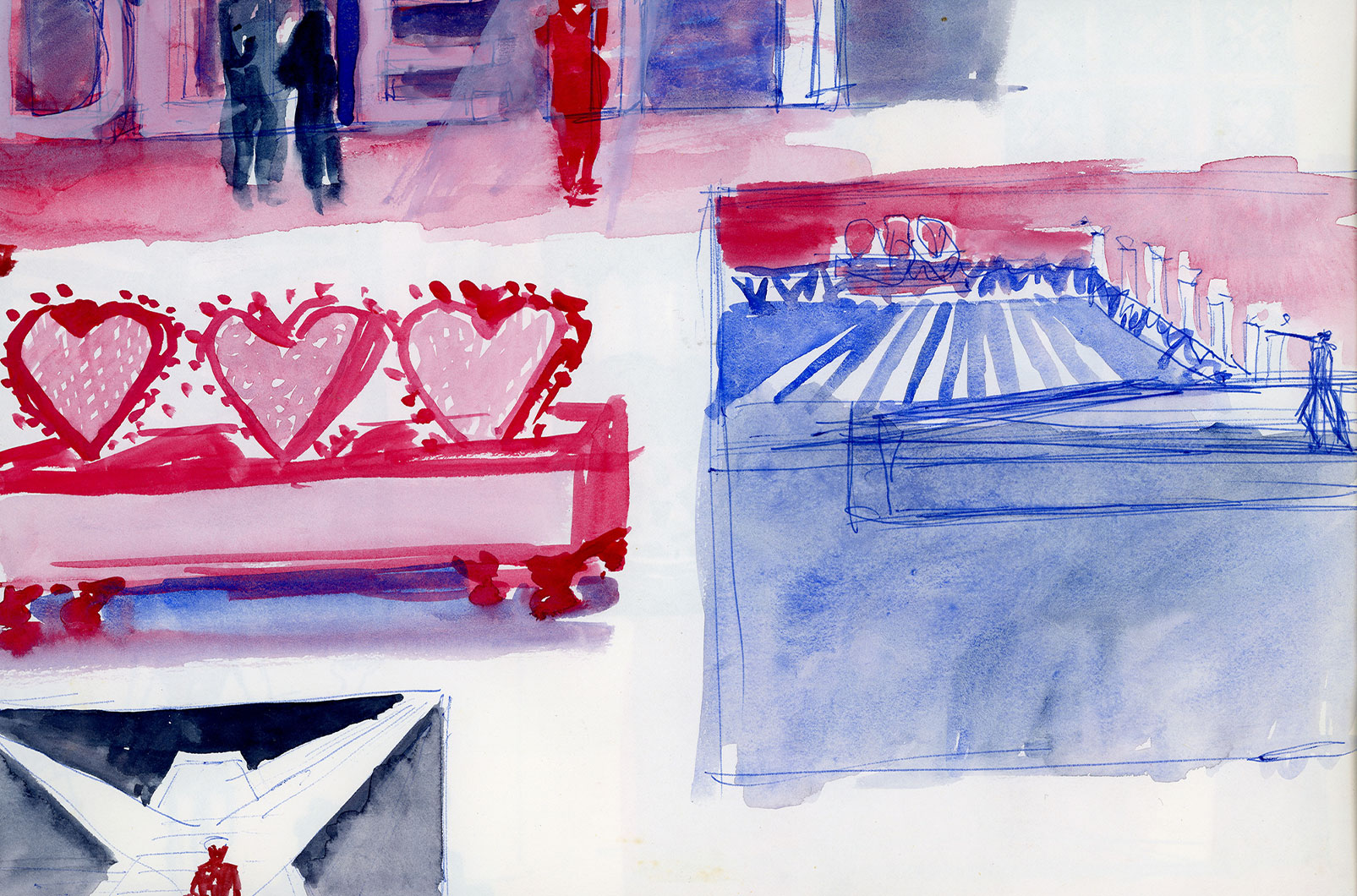
Graphic Work
Peter Stohrer learned the basics of graphic design from scratch at the advertising school, back in 1969 with preliminary drawings on paper and Letraset letters. Later, at the Folkwang University, the focus was naturally on the interdisciplinary teaching of design under the umbrella term “visual communication. But Peter Stohrer saw himself primarily as a painter, and advertising interested him mainly as the source of his artistic exploration of visual language as such.
What always interested him, however, was the documentation of creative processes, whether his own or those of other artists. His special love was art catalogs and art invitation cards. He collected them and created a considerable archive of contemporary exhibitions and art projects. At the same time, the archive was also a decision-making aid for him in his search for interesting artists. For example, he invited the astonished artist Hans-Peter Webel for an exhibition, based on a catalog from years ago, which he could remember better than the artist himself.
He also designed and produced all the catalogs for the exhibition series for which he was responsible as director of the WBK-Forum Bildender Künstler, as well as numerous brochures during his curatorial activities at the Städtische Galerie Schloß Borbeck. But also independent of concrete exhibitions, he realized catalogs on behalf of other artists. The most extensive (185 pages) was the last design before his death: the catalog “Rudolf Knubel – thinking with his eyes”, which was published on the occasion of a large retrospective of the artist in cooperation with two museums. A fruitful collaboration also developed with the Kulturzentrum Schloß Borbeck, under the direction of Dr. Bernd Mengede, for which he was responsible for the advertising presence from annual programs to the website since 2002. The special thing about his commissioned work as a graphic designer was that it always meant more to him than just doing a bread-and-butter job. Whether it was a sober annual report for the city of Essen or an effective advertising poster for an event, he always struggled not only to find the best possible solution, but also to find his own creative path.
Artists’ Catalogues (Selection)
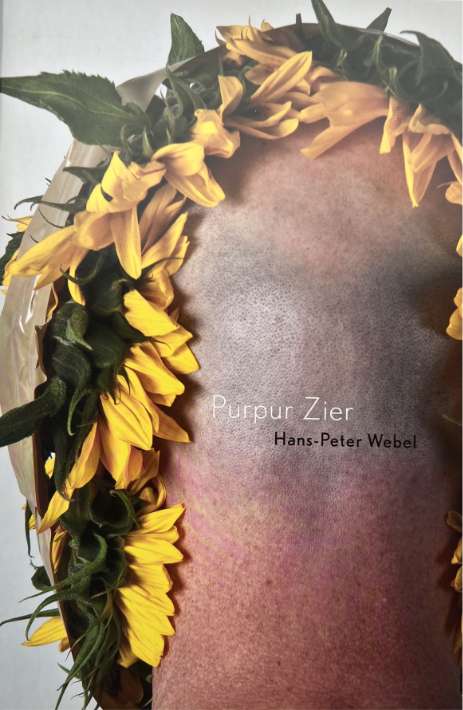

Catalogue
Hans-Peter-Webel
2012
Publisher: Stadt Essen, Städtische Galerie Schloß Borbeck
Print publisher: Kettler
ISBN 978-3-86206-153-2
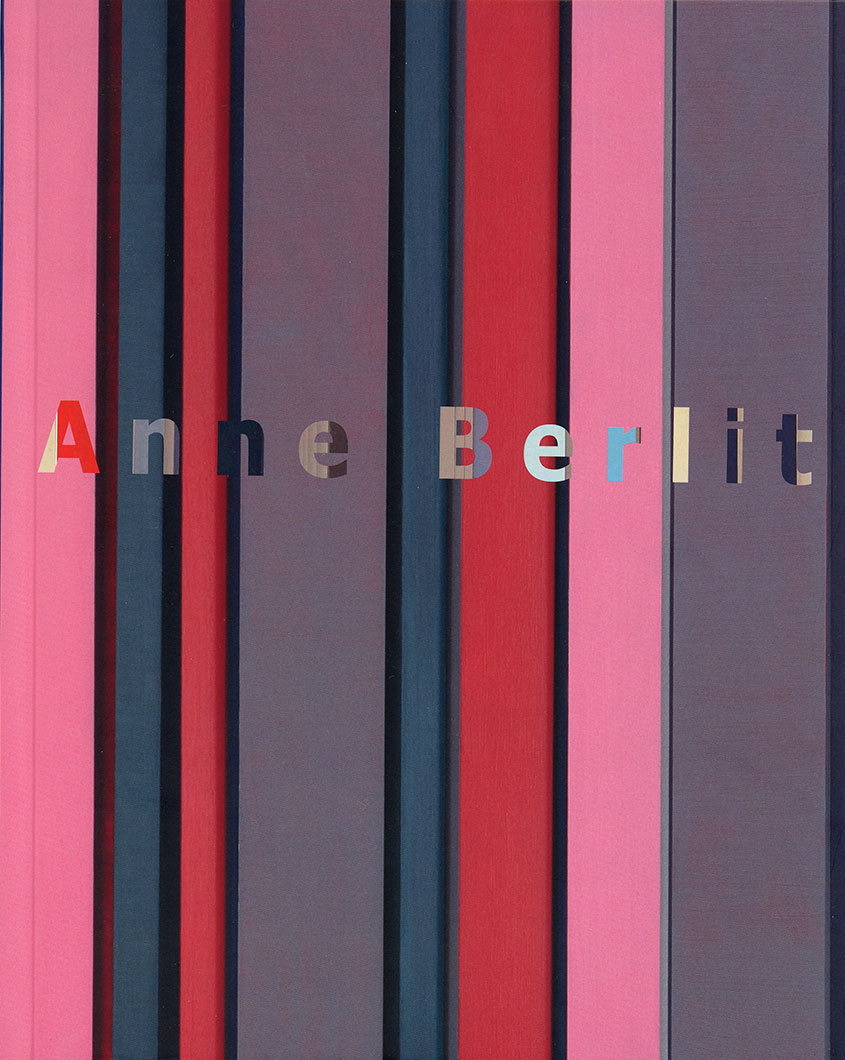
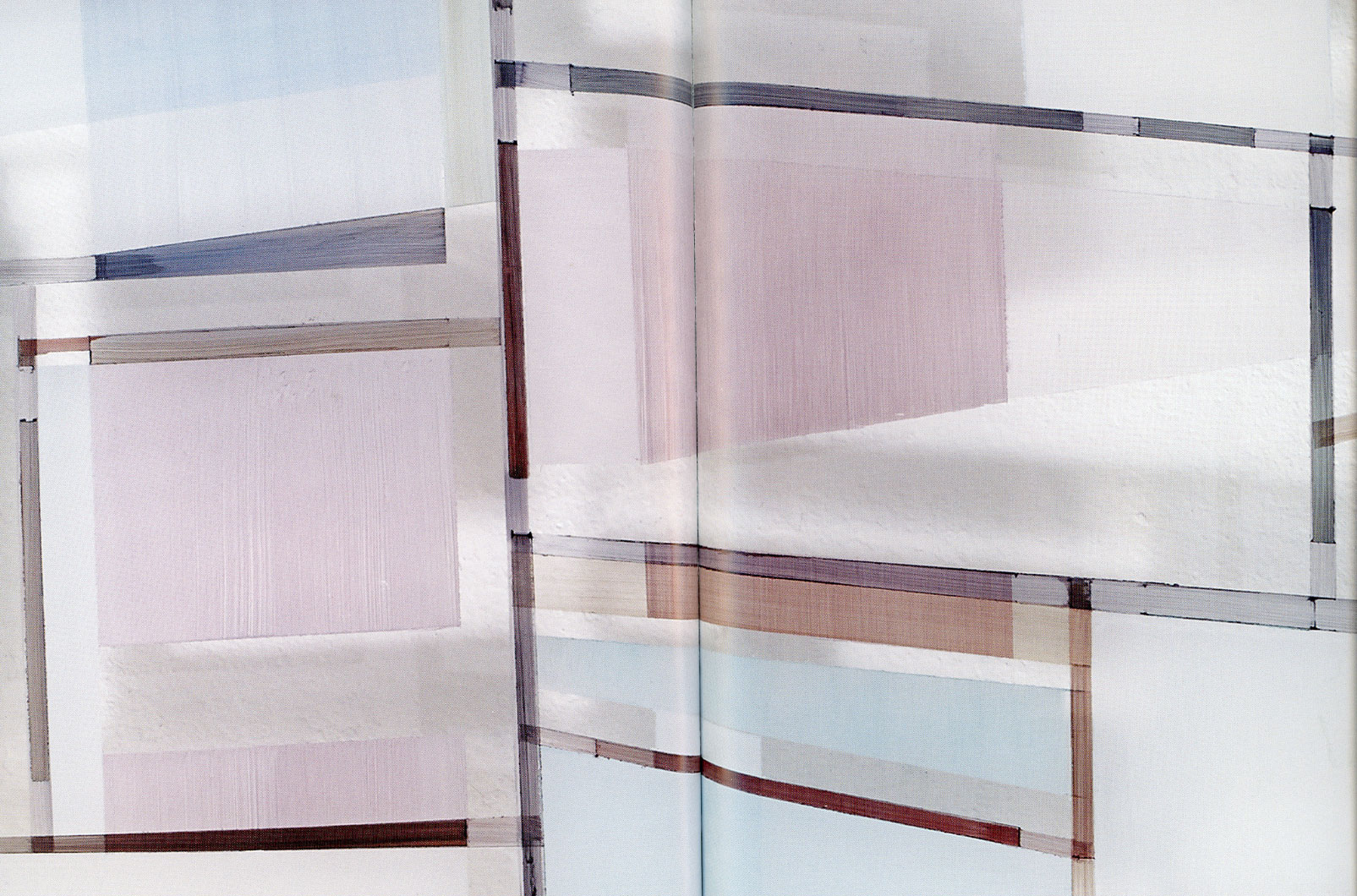
Catalogue
Anne Berlit – Codes and Windows
2013
Publisher: Stadt Essen – Städtische Galerie Schloss Borbeck
Text: Prof.Dr. Helen Koriath, Dr. Hella Nocke Schrepper
Print publisher: Kettler
ISBN 978-3-86206-327-7

Catalogue
Gunhild Söhn – Die Sammlung Gunhild Söhn
2011
Publisher: Oberbürgermeister der Stadt Herne, Flottmann-Hallen-Herne
Text: Sepp Hiekisch-Picard, Gunhild Söhn
Print publisher: Kettler
ISBN 978-3-934940-35-2
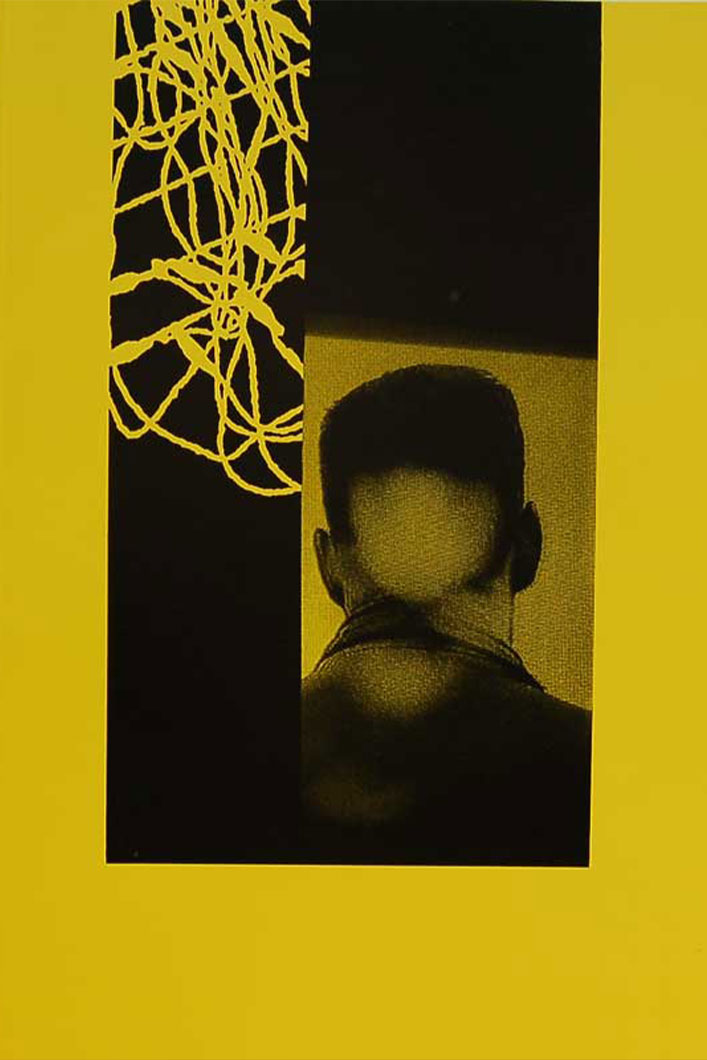
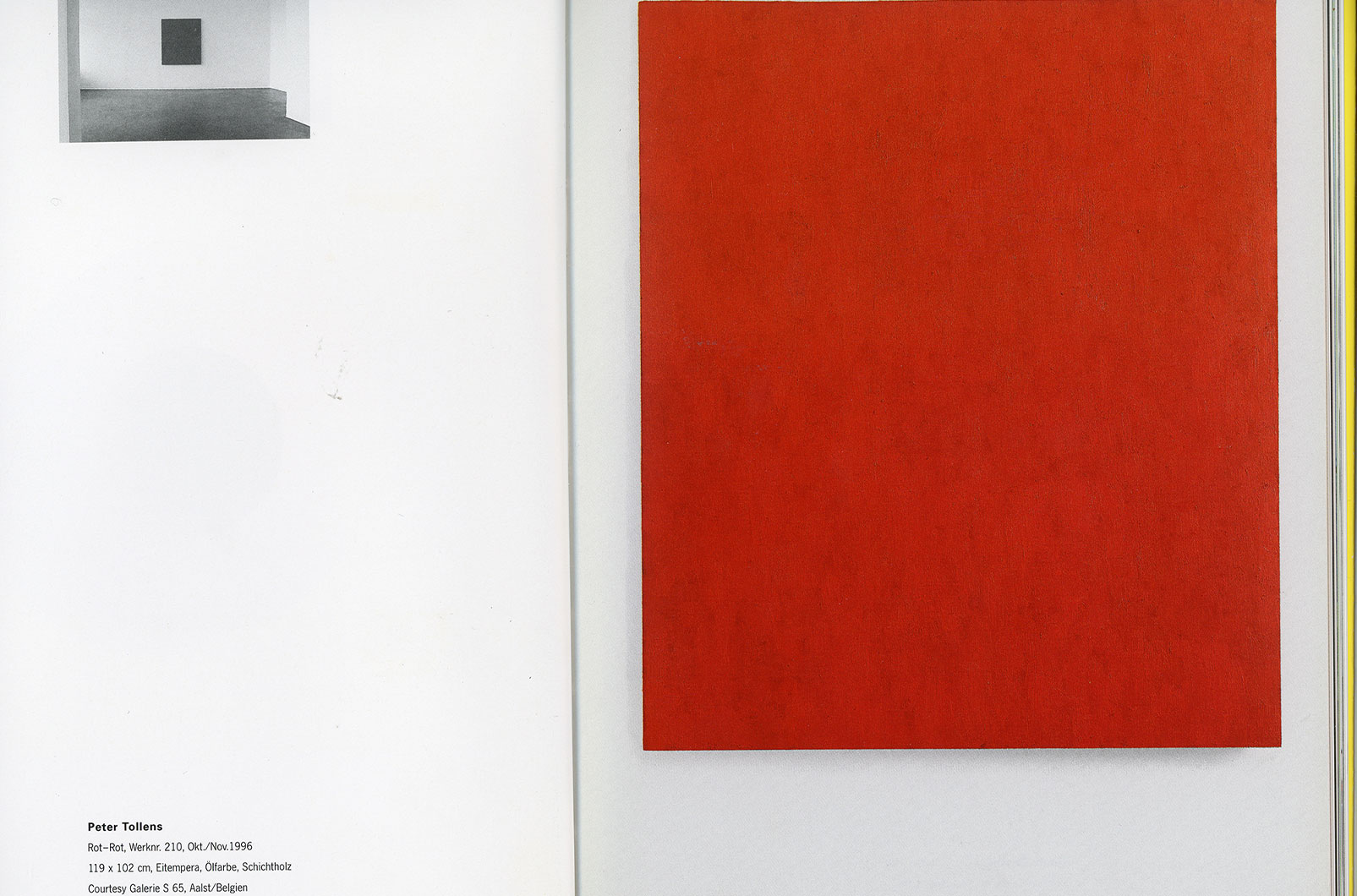
Catalogue
„Labor“
1997
4-part Exhibition series, with 21 artists
Publisher: Forum Bildender Künstler
Druckmeister Essen

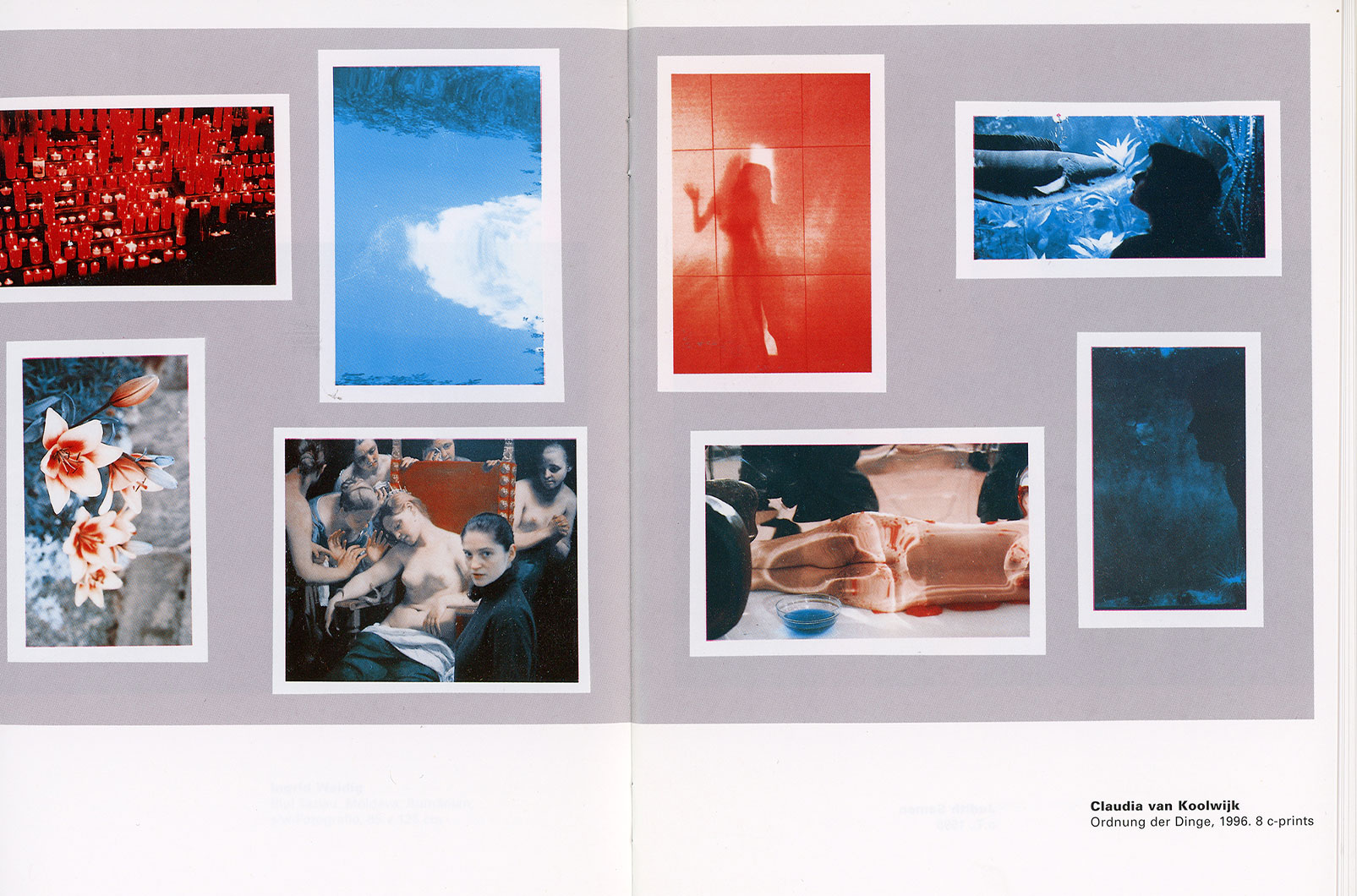
Catalogue
Updating-Foto und Video
1996
5-part Exhibition series with 8 artists
Publisher: Forum Bildender Künstler
Print: Kaufmann, Essen
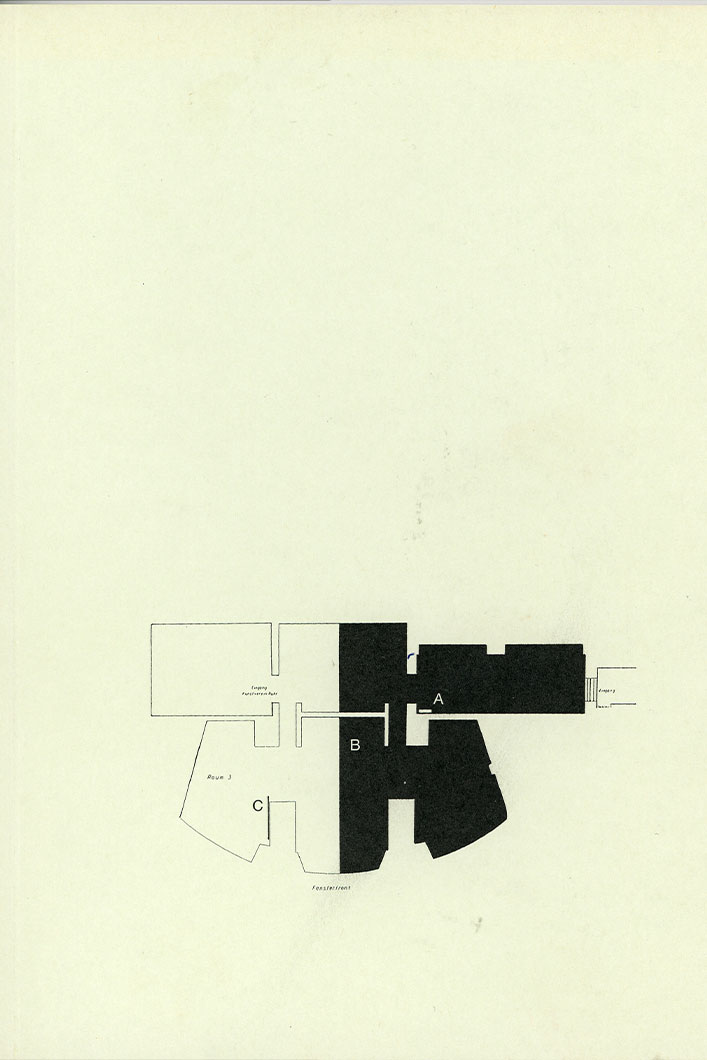

Catalogue
Zu Zweit
1995
8-part Exhibition series with 17 artists
Publisher: Forum Bildender Künstler
Print: Kaufmann, Essen
Plakate


Posters
JAZZ 2015 / JAZZ 2016 Schloß Borbeck
Invitation Flyer
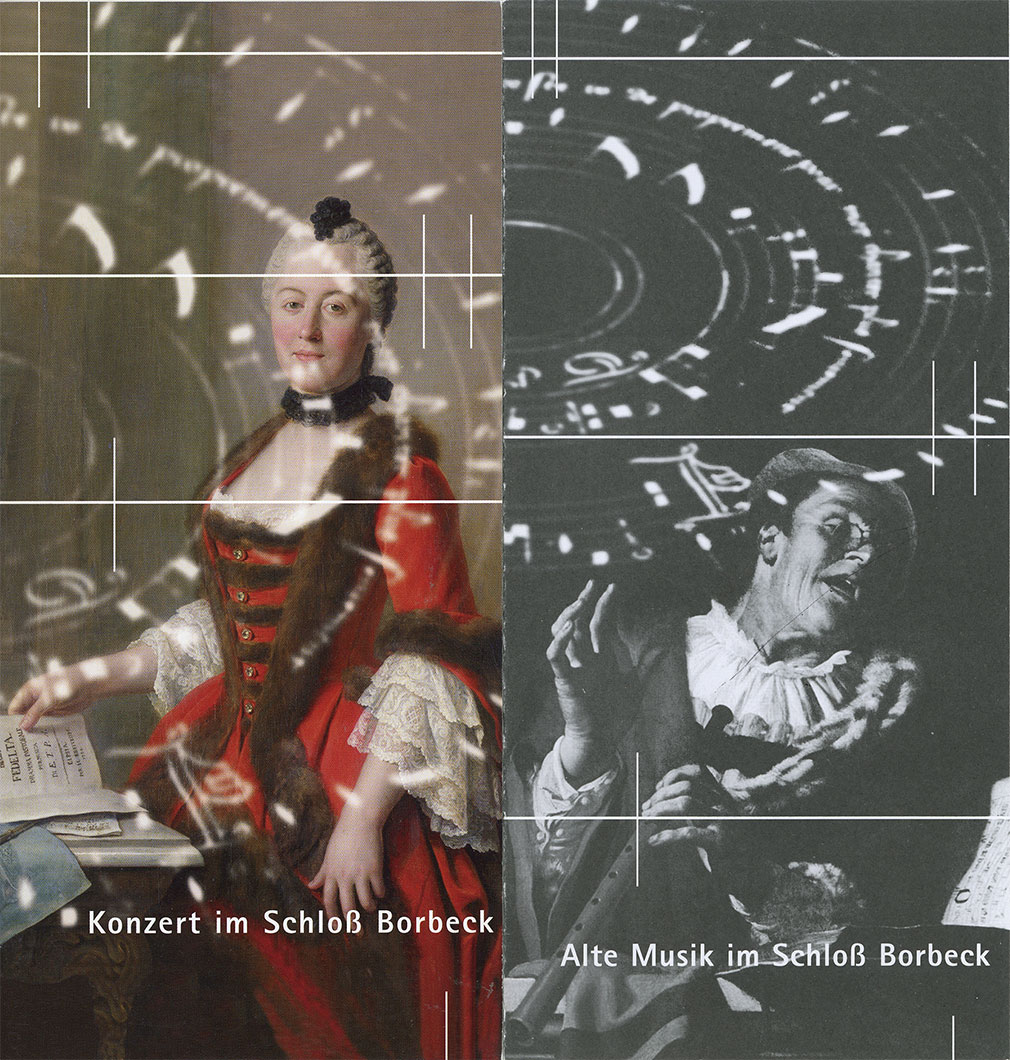
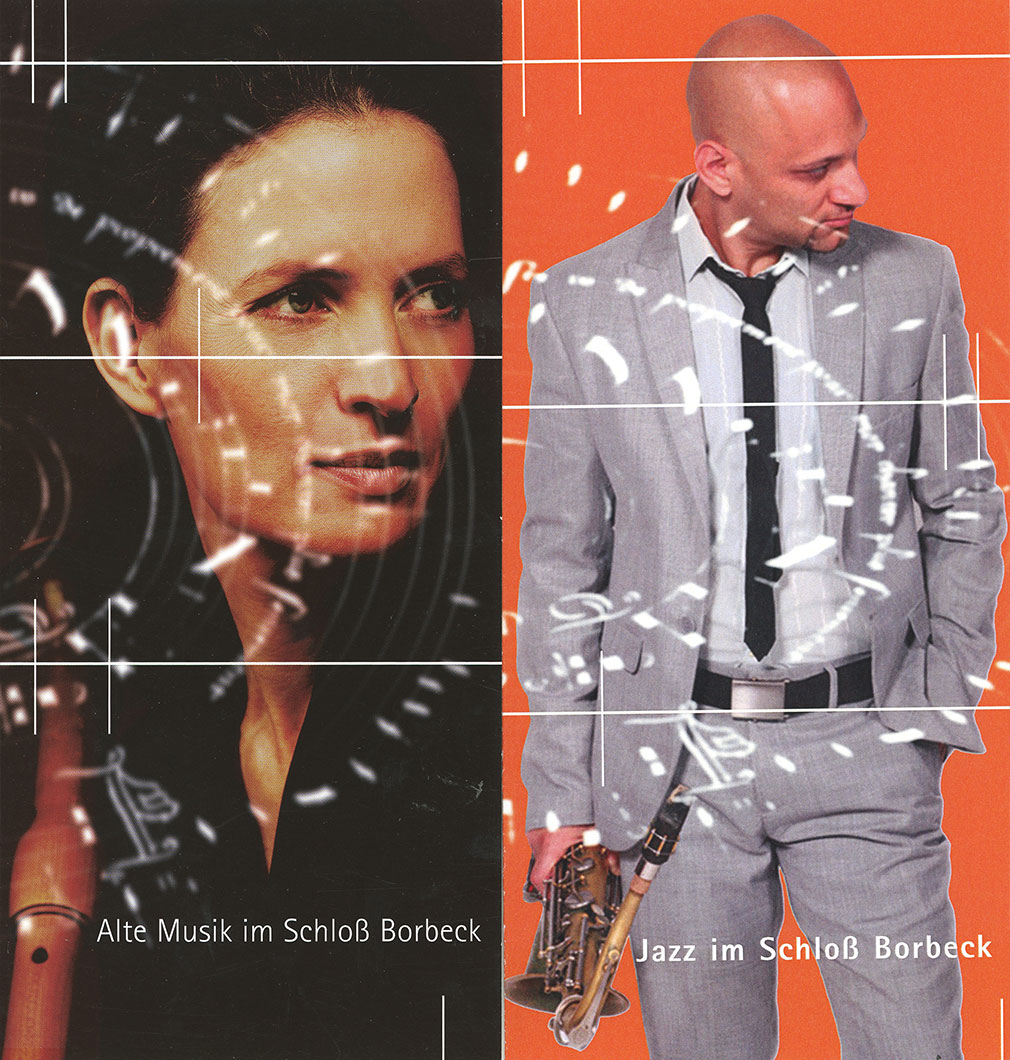
Invitation Flyer
Events in Schloß Borbeck
Annual programme folder
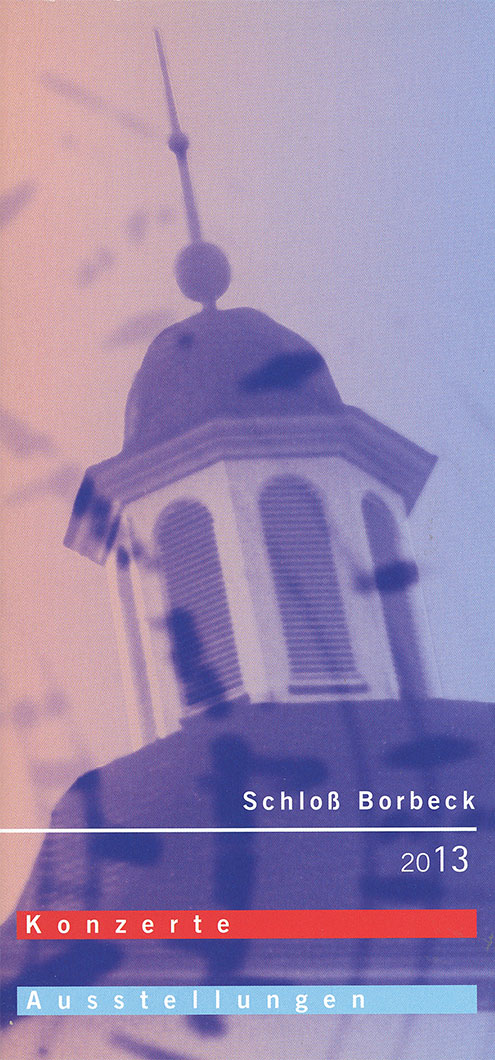

Annual programme folder
Concerts and exhibitions
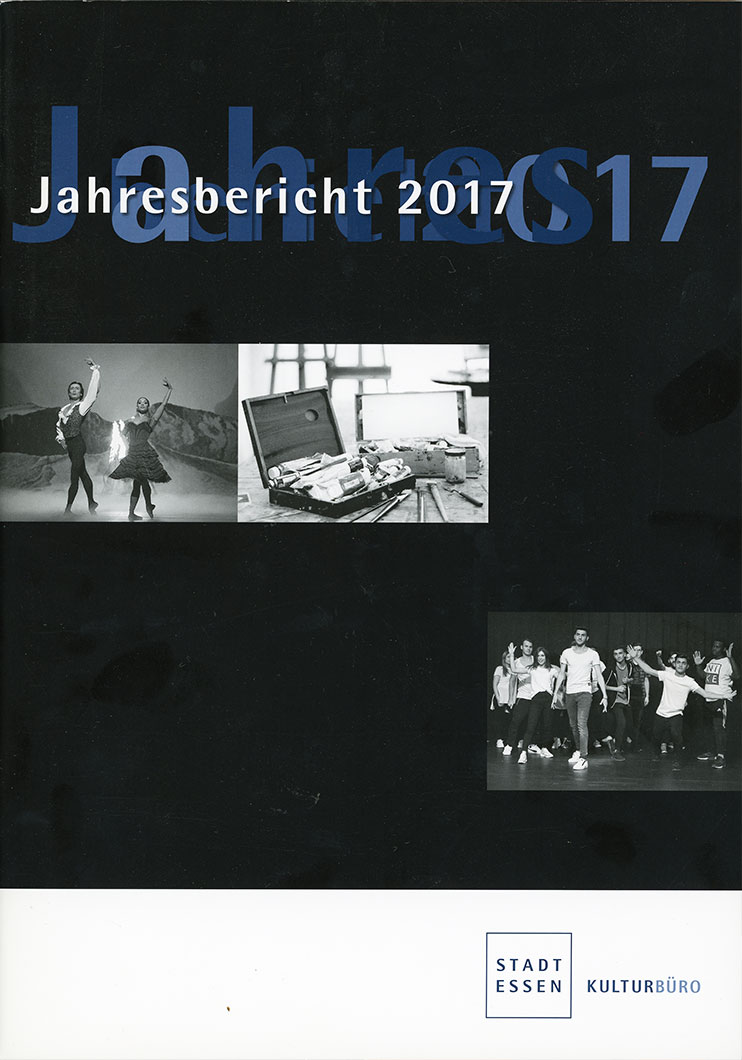
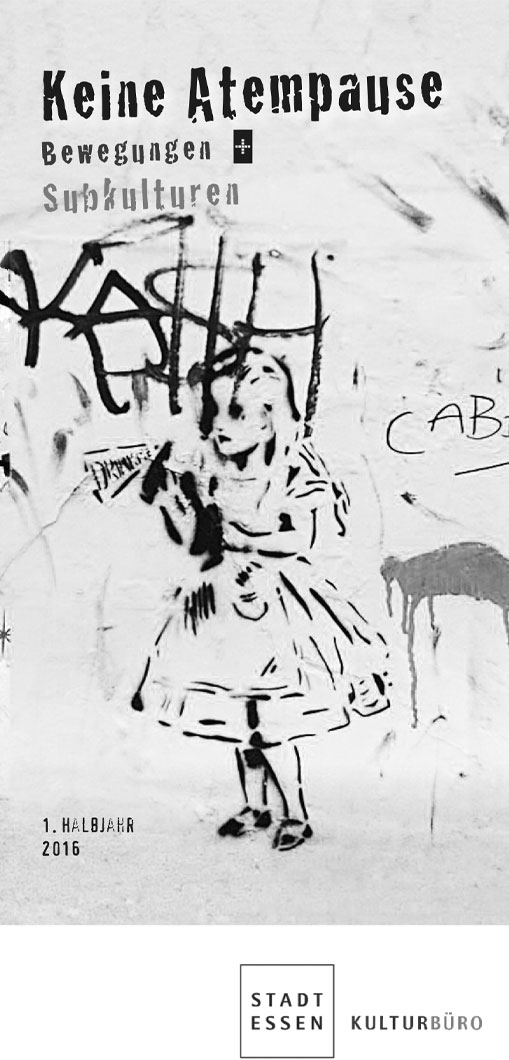
Annual Report 2017
Kulturbüro Stadt Essen
Cultural events (selection)
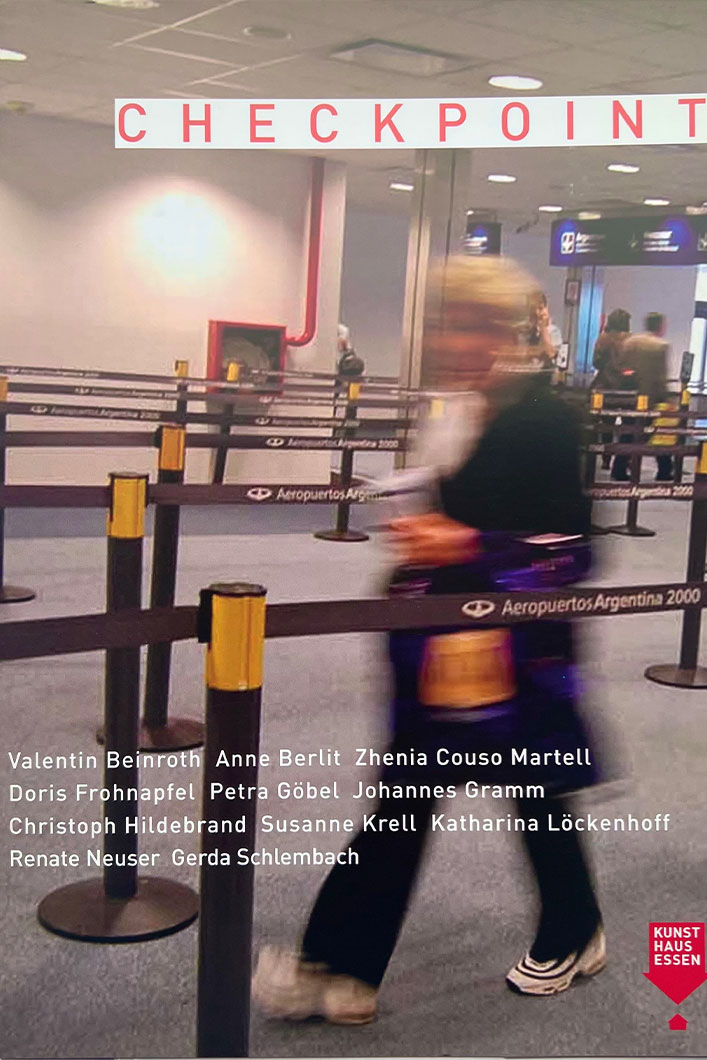
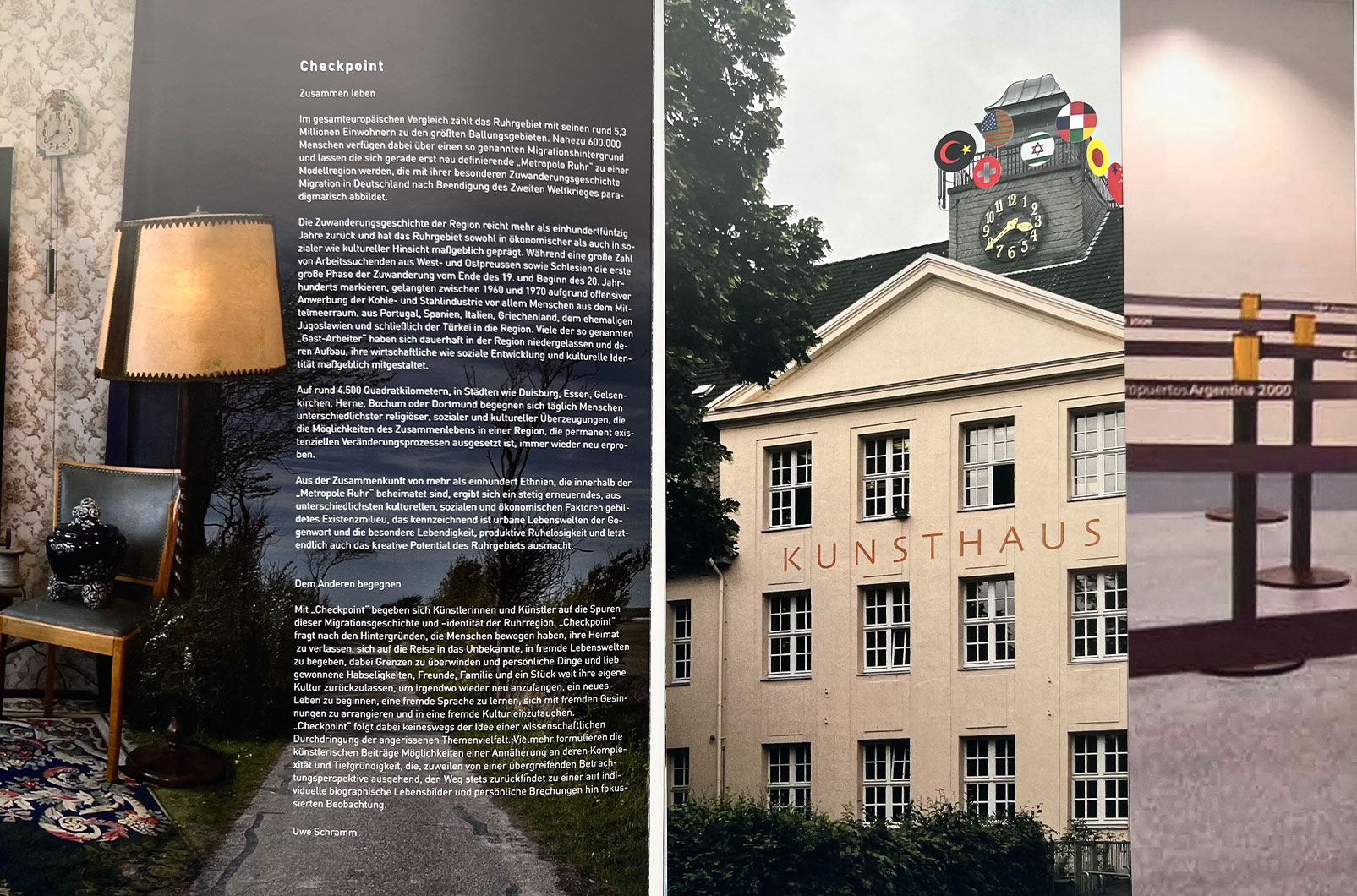
Cultural events (selection)
Checkpoint
2010
Catalogue Folder with 10 artists
„Checkpoint“, Project European Capital of Culture 2010
Publisher: Stadt Essen, Kunsthaus Essen
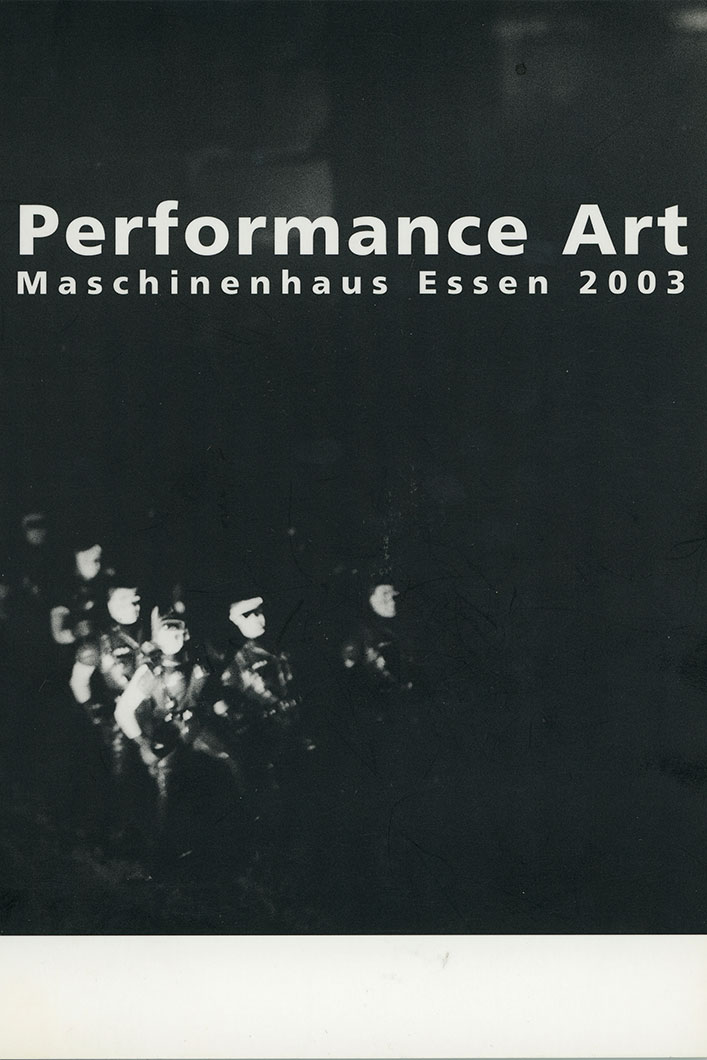
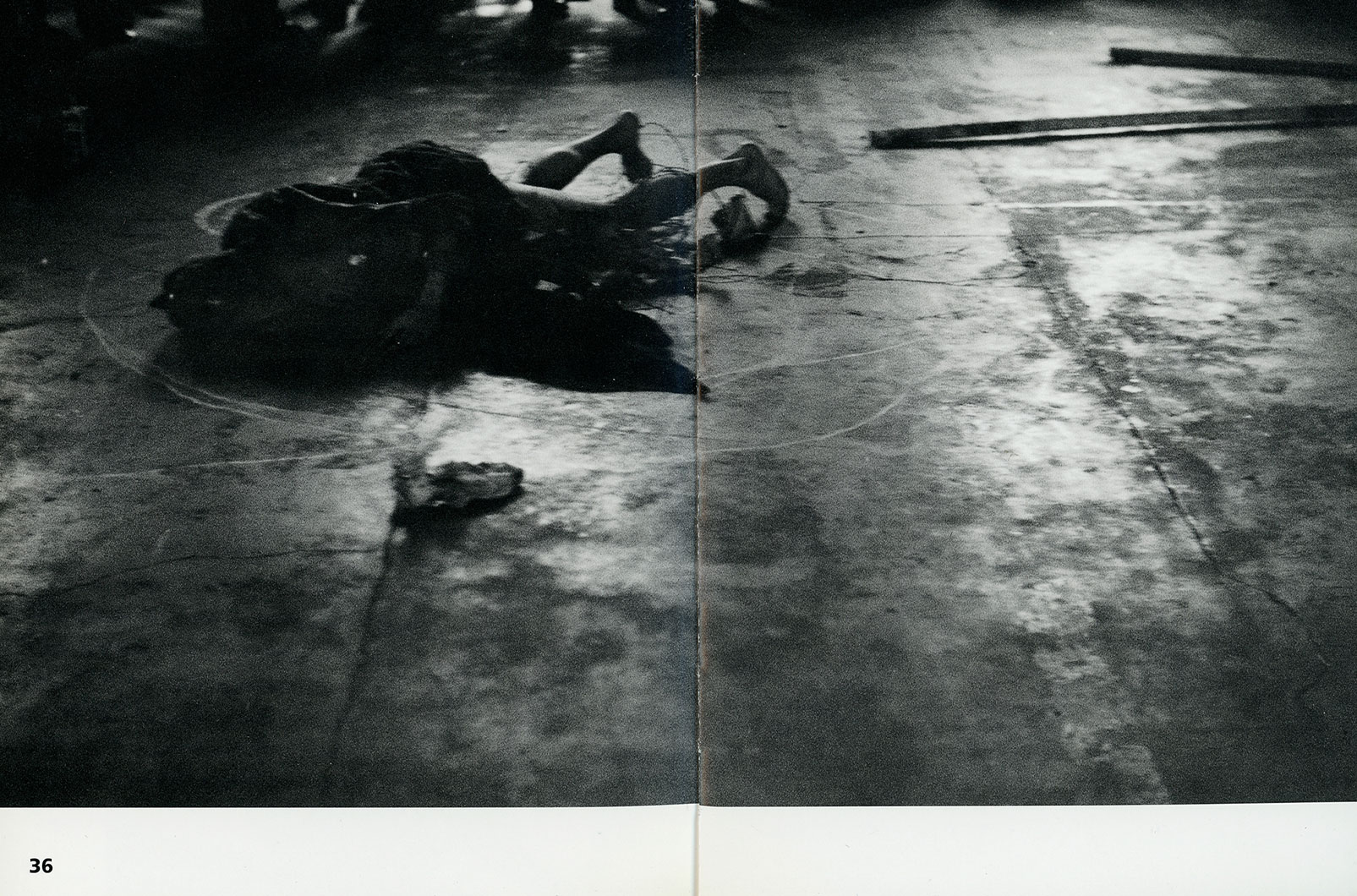
Cultural events (selection)
Performance Art-Maschinenhaus Essen
2003
„Performance Art-Maschinenhaus Essen“
Photographs of Clemens Willenberg
Publisher: Stadt Essen, Maschinenhaus Essen
Print publisher: Kettler
ISBN 3-937390-19-7

Cultural events (selection)
Im Strom der City
2000
Im Strom der Citiy – Mülheimer Medienmeile
Publisher: Kulturbetrieb Mülheim an der Ruhr

